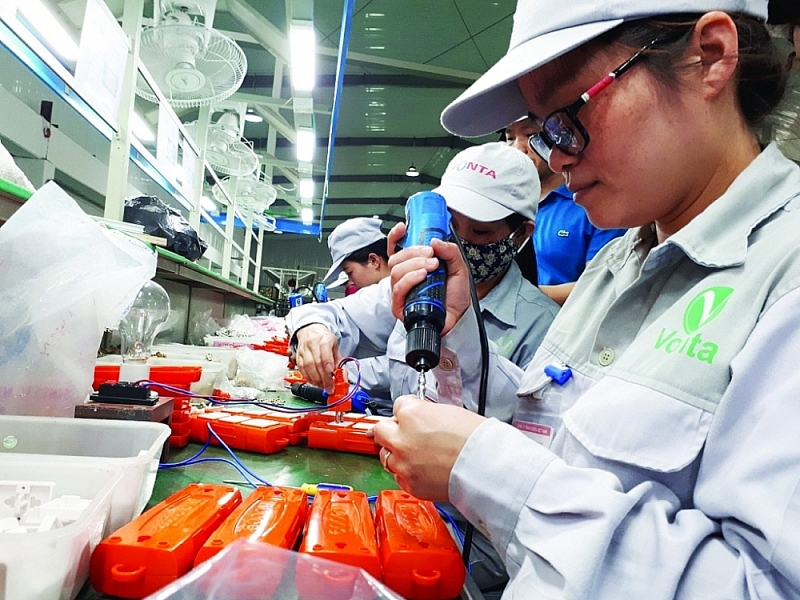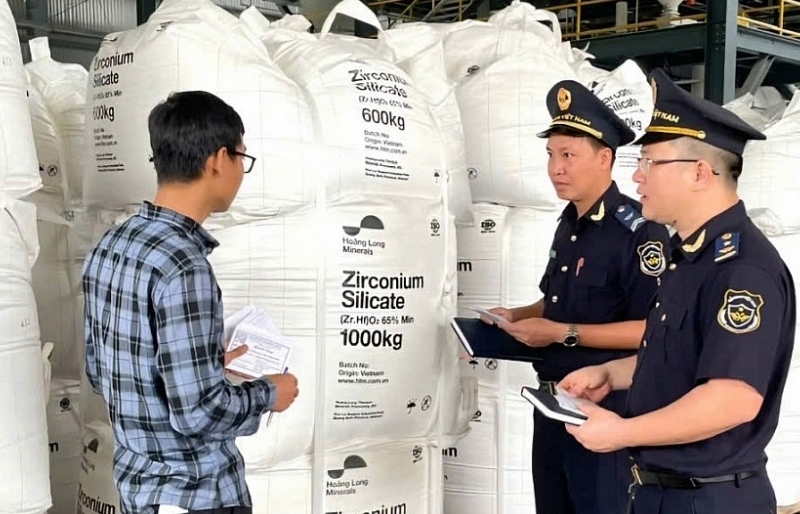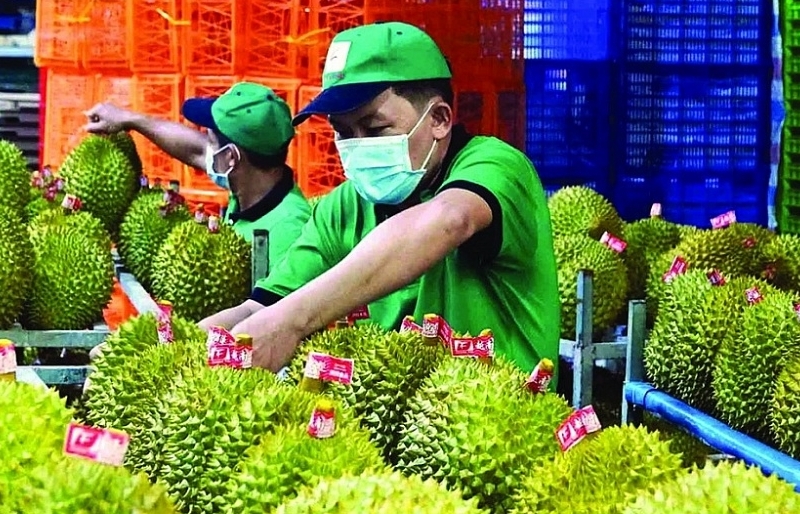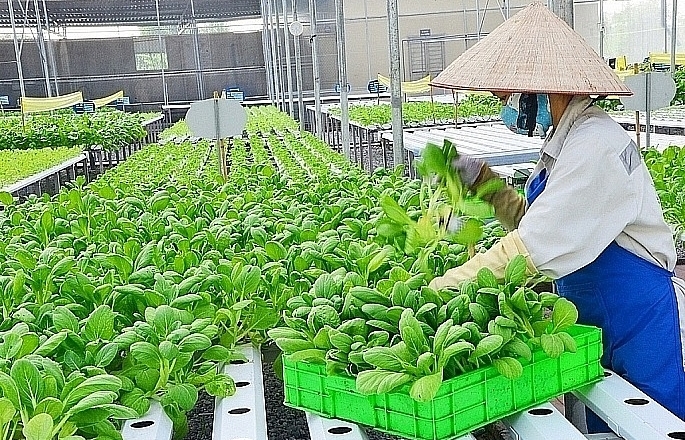Supporting industry development: downstream industry is the key
| Difficulties continue to “lay siege” to industrial production | |
| Dossiers and procedures for applying tariff rate of 0% under programme of preferential tariffs for automobile supporting industry |
 |
| Domestic enterprises supply about 10% of the domestic demand for supporting industrial products. Photo: Nguyen Thanh |
Low localization rate
Vietnamese supporting enterprises have developed in both quantity and quality, improved their production capacity and participated increasingly in the global production chain.
However, their scale and capacity have been limited. Regarding the supporting industry, a report submitted by the Government to the Standing Committee of the National Assembly, deputies of the National Assembly on the implementation of resolutions of the National Assembly on thematic supervision and questioning during the XIV term and some Resolutions during the XIII term of the Industry and Trade sectors, stated that currently, among about 1,800 companies producing spare parts and components, there are only about 300 domestic enterprises participating in the production network of multinational corporations.
According to the Government’s latest report, the number of enterprises operating in the supporting industry by the end of 2018 was about 1,800 units producing spare parts and components and more than 1,500 enterprises producing raw materials for the textile and footwear industry (accounting for nearly 4.5% of the total number of enterprises in the processing and manufacturing industry).
Supporting industrial enterprises create jobs for more than 600,000 workers, with net revenue of production and business in 2019 estimated at more than VND900,000 billion, contributing about 11% of the total revenue of the whole processing and manufacturing industry.
Regarding the capacity of production and technology management of the majority of Vietnamese supporting enterprises, the Government assessed that there were many limitations. Up to now, domestic enterprises have only provided about 10% of the domestic demand for supporting industrial products. The gap between the requirements of multinational corporations and the capacity of domestic enterprises has been large.
From the perspective of FDI enterprises, Dao Thi Thu Huyen, Deputy Director of the General Director Office, Canon Vietnam Co., Ltd., said Canon always looked for Vietnamese suppliers.
Currently, Canon has 59 component groups that need to be localized and this information was posted on the company’s website. "What have Vietnamese suppliers provided us with? Plastic, packaging, and printing components while a printer has nearly 400 components and many different types. When we look for new suppliers, they are still only suppliers of plastic components. There are many opportunities for Vietnamese enterprises, but they are not concentrating," said Huyen.
Notably, the Government’s report clearly stated that the self-sufficiency of domestic supporting industrial products had many shortcomings, and the localization rate in many industries was low.
The textile and garment industry is one an example. Currently, the localization rate of textile and garment enterprises is about 40-45%. Similar to the footwear industry, raw and auxiliary materials account for 68-75% of the footwear product price structure, but the localization rate of this product in Vietnamese enterprises is only 40-45%. The localization rate in electronics, telecommunications; and specialized electronics and high-tech industries is much worse, at 15% and 5%, respectively.
"Vietnam's electronics industry heavily depends on FDI enterprises, especially Samsung. Most of the localized components are supplied by FDI enterprises. Only about 35 Vietnamese enterprises are Samsung’s direct suppliers. They mainly supply consumable materials, packaging, printing with a very small value compared to Samsung's needs," said a representative of the Ministry of Industry and Trade.
Focus on developing the downstream industry
Regarding the development of the supporting industry in Vietnam, Do Thang Hai, Deputy Minister of Industry and Trade, said at the beginning of August 2020, the Government issued Resolution 115/NQ-CP on solutions to promote the development of the supporting industry, setting a target that by 2030, supporting industrial products would meet 70% of the domestic production and consumption demand; accounting for about 14% of industrial production value; there would be about 2,000 enterprises capable of directly supplying to assembly enterprises and multinational corporations in Vietnam.
"This once again affirms the meaning and important role of SI development in economic structure transformation, added value and economic competitiveness in Vietnam. In particular, after the impact of the Covid-19 pandemic, the trend of transferring investment capital flows to countries other than China will appear worldwide. This is a great opportunity for Vietnam. To take advantage of opportunities, improving production and enhancing productivity and quality need to be done regularly, because the thing FDI enterprises are interested in when choosing suppliers is that the production process from input to output must be professionalized, meeting their demand for raw materials in the long run," said Hai.
According to some experts, to develop Vietnam's supporting industry in the future, it is necessary to review and build new mechanisms and policies in line with integration commitments to support supporting industrial enterprises' development; continue to have new policies in management and investment attraction to ensure FDI enterprises have the connections and technology transfer as well as create spillovers for domestic supporting industrial enterprises.
Additionally, the key point mentioned in the Government’s report is to continue to strongly develop the downstream industry, including the energy industry, the precision engineering industry and the mechanical engineering industry. The capacity of Vietnamese supporting industrial enterprises is low, the value-added content and the competitiveness of domestic supporting industrial products is not high. Therefore, there are some general solutions to develop the downstream industry. First of all, the Government should have appropriate policies to protect the domestic market and create a healthy business environment to promote the development of domestic industrial products.
Specific measures are building drastic and consistent policies and solutions to focus on supporting a number of targeted Vietnamese enterprises in key downstream industries such as the automobile, electricity - electronics, textiles and footwear industries to become large regional corporations, creating a spillover effect and leading domestic supporting industrial enterprises to develop; and to formulate flexible and suitable import tax policies for imported components and spare parts for enterprises to reduce product costs and improve their competitiveness compared to imported goods.
In addition to the policy support from State management agencies, supporting industrial enterprises also need to improve their autonomy.
According to a representative of Samsung Vietnam, unless there is a lot of capital, changing technology and lines is extremely difficult for Vietnamese enterprises. Samsung encouraged them to make efforts in other areas, especially research and development (R&D).
"R&D costs of Vietnamese enterprises are very low, averaging about 0.2-0.3% of revenue. For example, with the same screw, now the enterprise sells it for VND1, next year sells it for VND0.8 only or for the same price but better quality. Without R&D, they can never do that," he said.
Related News

Proactive plan to meet customs management requirements at Long Thanh International Airport
18:30 | 21/12/2024 Customs

Resolve problems related to tax procedures and policies for businesses
13:54 | 22/12/2024 Regulations

Necessary conditions for operating a "natural flavor" business
19:28 | 14/12/2024 Import-Export

Support aggregate demand to promote economic growth
09:41 | 12/12/2024 Import-Export
Latest News

Nghệ An Province anticipates record FDI amidst economic upswing
15:49 | 26/12/2024 Import-Export

Green farming development needs supportive policies to attract investors
15:46 | 26/12/2024 Import-Export

Vietnamese enterprises adapt to green logistics trend
15:43 | 26/12/2024 Import-Export

Paving the way for Vietnamese agricultural products in China
11:08 | 26/12/2024 Import-Export
More News

VN seafood export surpass 2024 goal of $10 billion
14:59 | 25/12/2024 Import-Export

Exporters urged to actively prepare for trade defence investigation risks when exporting to the UK
14:57 | 25/12/2024 Import-Export

Electronic imports exceed $100 billion
14:55 | 25/12/2024 Import-Export

Forestry exports set a record of $17.3 billion
14:49 | 25/12/2024 Import-Export

Hanoi: Maximum support for affiliating production and sustainable consumption of agricultural products
09:43 | 25/12/2024 Import-Export

Việt Nam boosts supporting industries with development programmes
13:56 | 24/12/2024 Import-Export

VN's wood industry sees chances and challenges from US new trade policies
13:54 | 24/12/2024 Import-Export

Vietnam's fruit, vegetable exports reach new milestone, topping 7 billion USD
13:49 | 24/12/2024 Import-Export

Aquatic exports hit 10 billion USD
13:45 | 24/12/2024 Import-Export
Your care

Nghệ An Province anticipates record FDI amidst economic upswing
15:49 | 26/12/2024 Import-Export

Green farming development needs supportive policies to attract investors
15:46 | 26/12/2024 Import-Export

Vietnamese enterprises adapt to green logistics trend
15:43 | 26/12/2024 Import-Export

Paving the way for Vietnamese agricultural products in China
11:08 | 26/12/2024 Import-Export

VN seafood export surpass 2024 goal of $10 billion
14:59 | 25/12/2024 Import-Export





